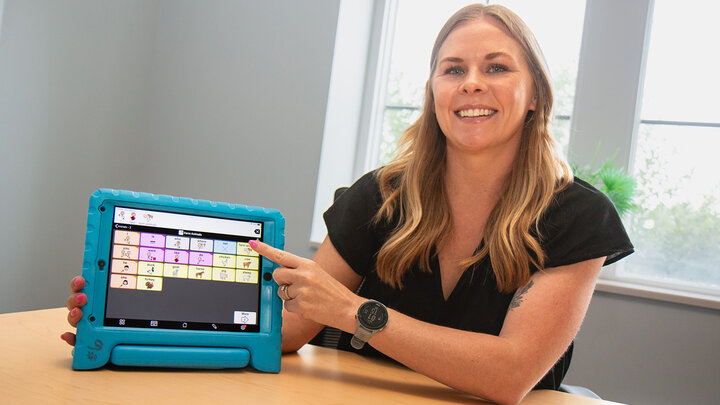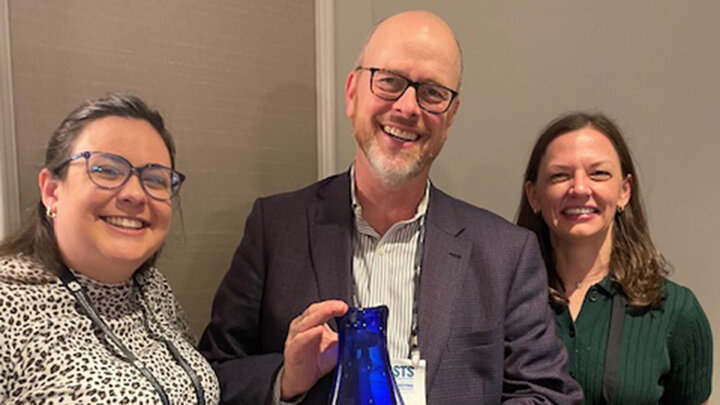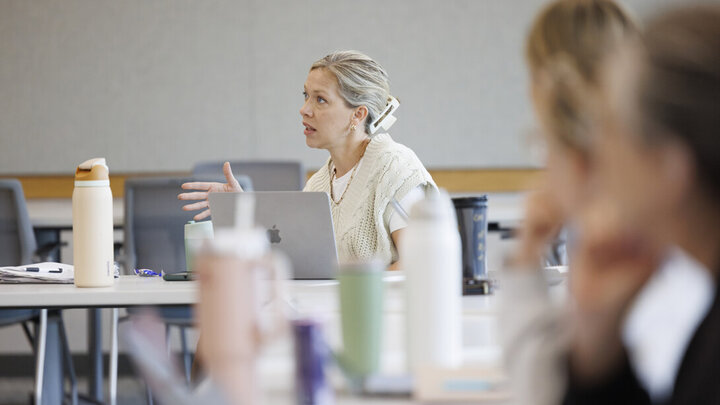Autism is the fastest-growing disability category in Nebraska. About 30% of autistic children do not develop vocal speech by age 4 and require augmentative and alternative communication (AAC) — non-verbal methods such as gestures, facial expressions, picture cards and tablets to communicate.
While family-implemented interventions can boost communication and AAC use, they often exclude siblings as communication partners. There is also limited research available on how neurotypical children perceive their autistic sibling, particularly when they use AAC.
Ciara Ousley, assistant professor of special education and communication disorders, is leading a project to better understand relationships between typically developing children and their autistic siblings who use AAC. She and HyeonJin Yoon, MAP Academy research assistant professor, will explore how siblings view their roles and responsibilities with one another through interviews with each child and an observation of the siblings’ play-time interactions.
“When we talk about family supports, that typically means parents and caregivers,” said Ousley, a CYFS research affiliate. “We sometimes forget about including siblings who could really influence the child as well. Siblings may be able to predict what their sibling wants better than a parent can, simply because of closer developmental levels and the conversations they have.”
The two-year project is funded by the CYFS Signature Research Impact Program, which was developed to address critical issues affecting Nebraska’s children, youth, families, schools and communities.
Established in 2024 as part of the center’s 20th anniversary milestone and vision for the future, it supports high-impact research in the social, behavioral and educational sciences that benefits Nebraskans, fosters collaboration and generates pilot data to secure external funding. Funding for this program is provided by generous private donations directed to the center through the University of Nebraska Foundation.
Ousley aims to recruit 10 families to participate, each with an autistic child between the ages of 6 and 12; a neurotypical sibling, age 5 to 15; and a parent or caregiver. Each sibling and the parent will be interviewed, and one play interaction among siblings will be recorded.
At-home interviews will help researchers gather data on each child’s perceived roles and responsibilities in their sibling relationship. Parents will also be interviewed to expand and validate the children’s responses.
Families will video record 15-minute sibling play sessions at home using provided technology. The team will analyze these videos to see how the children naturally communicate in their everyday settings.
Ousley said this research will provide the foundation to eventually developing a sibling-implemented intervention for autistic children who use AAC. She notes that children who spend significant time with their autistic siblings are critical communication partners, especially during play.
“Research shows we can teach young children to use strategies,” Ousley said. “But we need to capitalize on the sibling relationship’s strengths without turning the sibling into a third guardian. There still needs to be that fun sibling relationship.”
Findings will be used to create more opportunities for the nearly 690,000 autistic children who use these non-verbal tools to thrive — and reduce the risk of life-long social isolation.
One of the most unique and challenging elements of the study, Ousley said, is the inclusion of the autistic children’s perspectives.
“Rarely do we actually get to hear those voices of the children with autism, and what their thoughts and feelings are,” she said. “That will allow future interventions to be influenced by autistic voices as well.”
Learn more about this project in the CYFS Research Network.
College of Education and Human Sciences
Special Education and Communication Disorders




